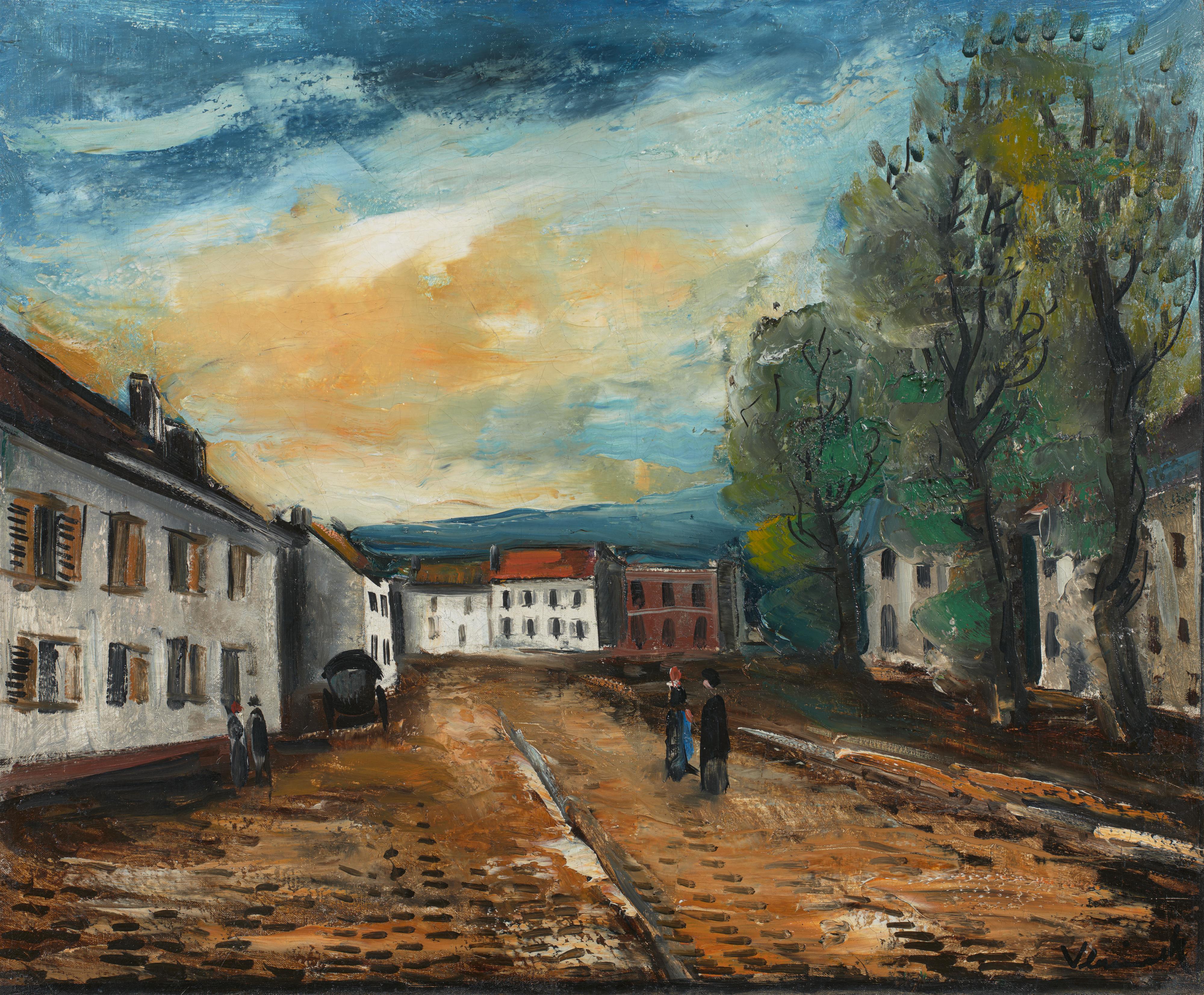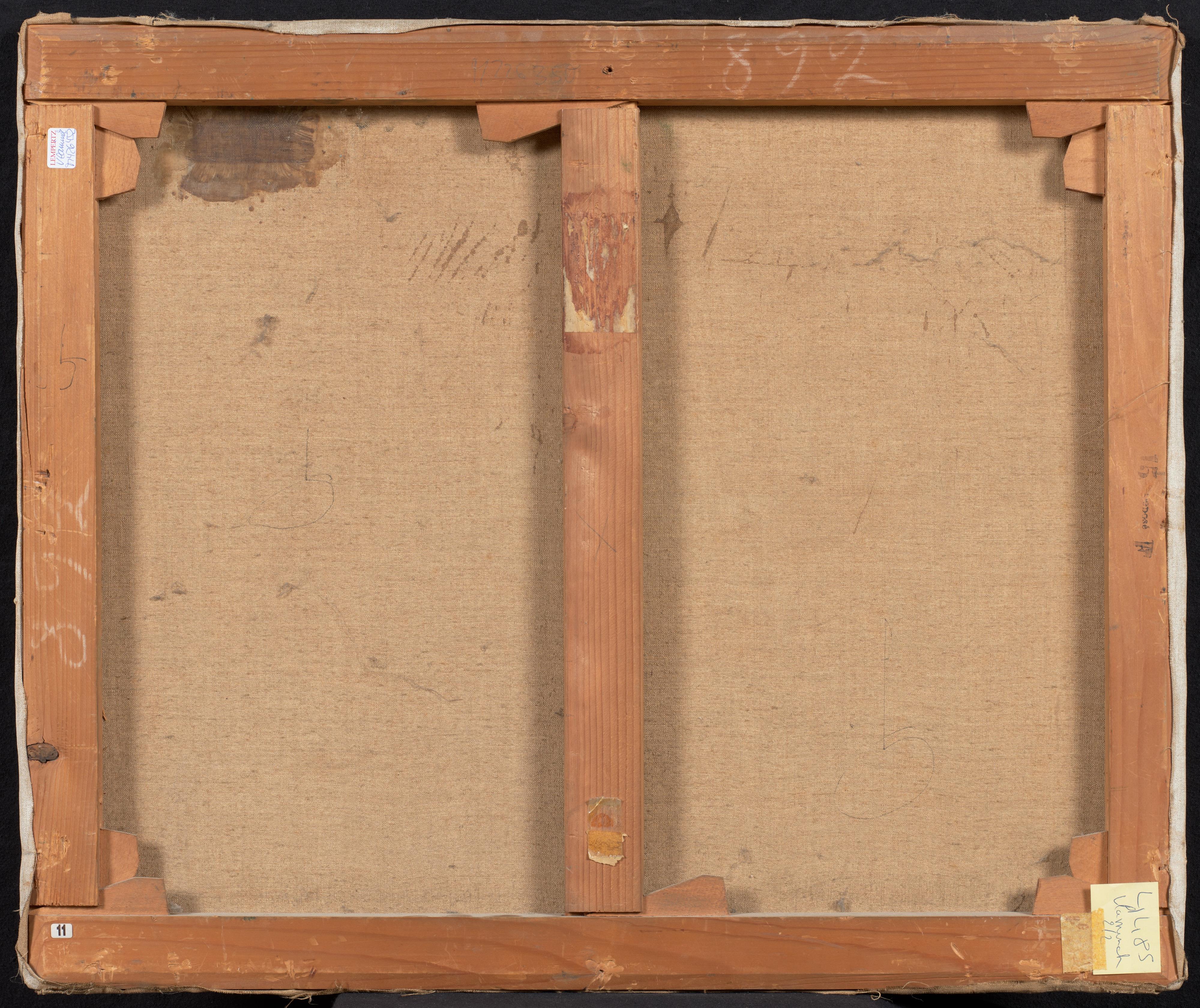Maurice de Vlaminck
Rue de Village
1920s
Oil on canvas. 54 x 65 cm. Framed. Signed 'Vlaminck' in black lower right. - In fine condition. Slight craquelure, few minor retouchings.
Created in the 1920s, the veduta “Rue de Village” captivates us with a perspectival composition that leads our gaze into the picture, along the street and far into the distance. Maurice de Vlaminck has chosen to centre the picture around two white buildings with red roofs, which are presumably also the walkers’ destination. The street is flanked by two rows of buildings to the left and right as well as three trees which diminish in size towards the middle of the painting. A gold-coloured sky arches above the little town. On the whole, the picture is dominated by a dark and tonal palette featuring earthy tones– only the white of the houses and the orangish yellows of the setting sun establish accents. Compared to Vlaminck’s early period, in which his painting technique was based on van Gogh’s, the brushwork here has become calmer and presents larger, contiguous areas of colour.
“Rue de Village” was probably created near Valmondois, a town around 40 km north of Paris to which Vlaminck had withdrawn after the end of World War I in search of a calm place to paint: “I ended my lease on my studio and moved to Valmondois, where I had a sense of being truly in the country, far away from the capital” (cited from Maurice de Vlaminck, Rückblick in letzter Stunde. Menschen und Zeiten, St. Gallen 1965, p. 121). He arrived at his definitive style there, painting numerous vedute and landscapes that are related to the view offered here in terms of composition, painting technique and palette and which herald his magnificent late work.
Certificate
A confirmation by the Wildenstein Plattner Institute, Paris, can be obtained on demand.
Provenance
Gustav Willner, Berlin; Collection Christel Reuter (née Willner) and Edzard Reuter, Munich/Stuttgart; Lempertz Cologne, Auction 482, 21 May 1965; Private collection, North Rhine-Westphalia




